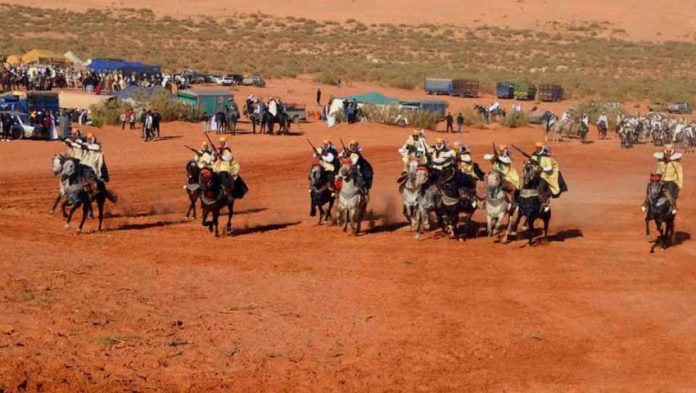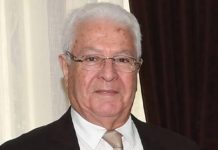NAAMA- The Waâda of Sidi Ahmed El Medjdoub, slated for October 13 to 15 in the municipality of Asla (Nâama), constitutes an event of cultural and religious significance during which the local population shed light on their traditions and inherited customs, as well as promote their destination.
The commune of Asla, located 58 km east of Nâama, is experiencing an unusual effervescence during this holiday season due to the thousands of visitors flocking in huge numbers to attend this annual event after two seasons of interruption due to the Coronavirus pandemic. Asla, this archaeological and tourist area, thus, emerges from its torpor to live to the rhythm of various religious, artistic and folkloric activities that can revive tourism and promote the natural sites of Nâama.
This annual occasion is held to commemorate the life and achievements of the patron Saint of the region, Sid Ahmed El Medjdoub (1493-1571). A religious personality who was imbued with the Maliki doctrine, thanks to his training with eminent scholars, like his grandfather Sidi Slimane and the scholar Sidi Ahmed El-Meliani.
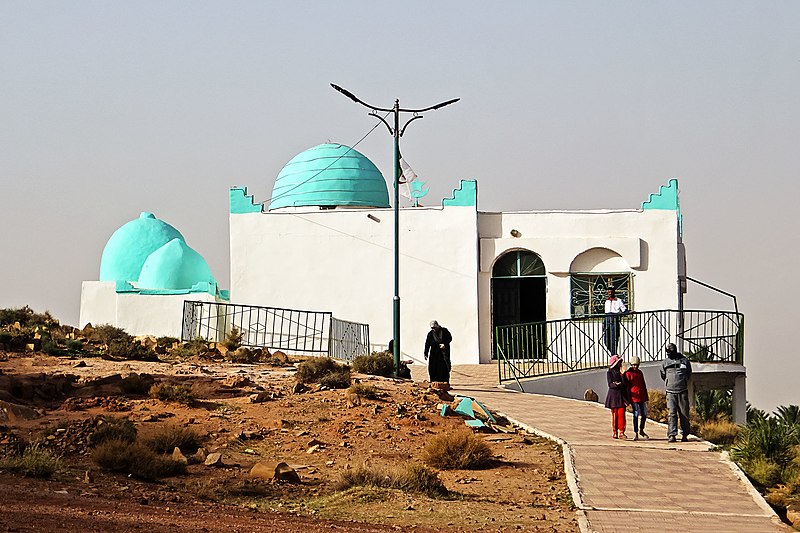
The waâda consists in collective recitation of the Holy Quran by the talebs and chouyoukh of the Zaouia. The recitation of the Holy Quran is known as “Selka”. Songs and religious invocations as well as the presentation of conferences dealing with religious subjects are also on the program of the event.
Fantasia shows are also presented by groups of riders to the rhythm of folk music and bursts of baroud. These cavalry games are called “El Afat” by the locals. More than 200 riders from different wilayas are expected this year, according to the organizers.
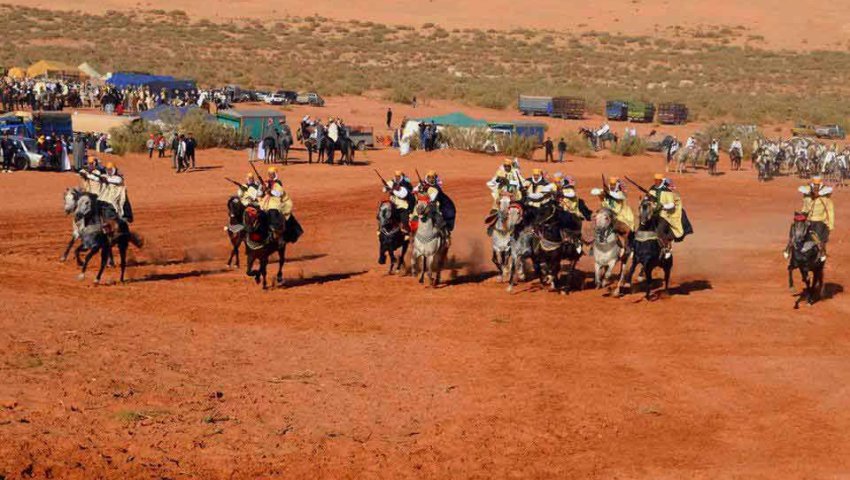
Undoubtedly, the waâda of Asla constitutes a religious and cultural event, as well as an attraction for visitors expected from different regions of the country. This event has become, over the years, a station to revive local tourist activity. Visitors have the opportunity to discover and appreciate many natural and historical sites for which the wilaya of Nâama is famous.
Tourism and travel agencies do not miss this opportunity to organize excursions to the Oases, the ancient ksours, the sites of rock engravings, the spa town of Aïn El Ouarka and other niches which contribute to activating and relaunching domestic tourism.
The Department of Tourism and Handicrafts organizes, for its part, a fair of handicraft products, as well as an exhibition of photos and videos related to the various tourist potentialities of the wilaya in order to promote tourism in the region and contribute to the celebration of its heritage and history.
In addition, this waâda is distinguished by the preparation of meals to be served to visitors. Several sheep are slaughtered for the preparation of couscous and Hrira. A large space is reserved for trade.
You can find everything there, including household appliances, the Aflou carpet, the pomegranate of Boussemghoun, and the delicious “Aghrace” date of Moghrar. Another space is reserved for healers, medaha and others. Coaches, minibuses, taxis (all kinds of means of transport), even dump trucks (GAK), vans, could not suffice for the movement of people from all walks of life.
This event is also an opportunity to reconcile belligerents and a moment of reunions of families and members of different tribes and arches.
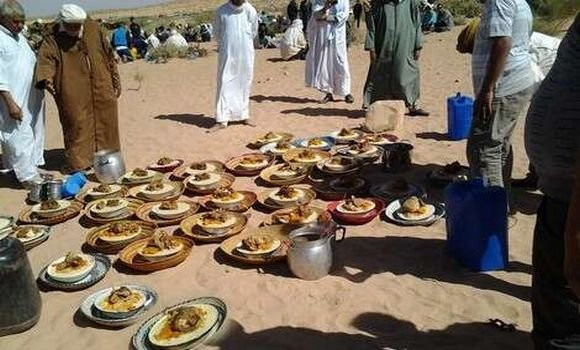
To organize this religious and cultural celebration, various partners are involved, such as; the directorates of culture and the arts, the mujahideen, academics, intellectuals, writers and local associations, in addition to the local population. Contributions are also made in the form of various historical publications and works on the heritage of the region and the history of popular resistance against the French colonizer.
The Waâda represents an opportunity to link the present of the population to its past. It coincides with the completion of the harvest-threshing campaign and the start of ploughing-sowing. This annual meeting is synonymous with solidarity, a spirit of mutual aid and fruitful agricultural harvests.
Sidi Ahmed El Medjdoub (1493-1571) is a religious personality, a man of Knowledge, a Sufi who taught grammar, Maliki doctrine, hadith, and the recitation of the Holy Quran. He contributed to the dissemination of the foundations of fikh in the south-west of the country, according to historical sources.
El-Hadj Chekhnaba Maâmar, one of the notables of the Arch El-Medjedba, with reference to the name of the patron saint, indicated that this ancestral local festival is dedicated, in particular, to the commemoration of this religious personality who occupies a position of choice in the memory of the inhabitants of the region and followers of the zaouia (brotherhood) of the municipality of Asla, dedicated to Koranic teaching and welcoming passengers.
For his part, Beliya Baghdad, a professor at the Naâma University Center, believes that this Maoussem is intended to strengthen ties between generations. Besides, being held at the end of the harvest season and the start of that plowing-sowing campaign, reflects a call for solidarity, while the folkloric festive component reflects the preservation of collective memory.
Spreading out over four days during the second week of October, this festival is marked by the installation of dozens of tents, each representing an Arch (tribe), including those of the Hmiyane, Laâmour, Ouled- Ziad, Trafa, Ouled-N’har, Ouled Djerir and El-Ataouna.
The festival is also an opportunity for participants to promote popular lyrical and poetic heritage, including the Melhoun, in the Sufi register in particular, and to devote aspects of solidarity and mutual aid within society, as the ritual of this Maoussem gives rise, in addition to the recitation of the Holy Koran, and the preparation of the collective meals in honor of the guests, served at the level of the large esplanade commonly called ”Tahtaha”, of jousts of poetry and halaqate (meeting points) for the resolution of conflicts and social disputes, before being sanctioned, Friday evening, by the organization of an imposing halqa of imploration and Praise to Allah.
The Mokaddem of the zaouïa of El-Medjedba, Cheikh Tayeb Herbal, for his part, valued this festival which constitutes an adequate space to highlight the various tourist assets of the region and its other segments, the agro-pastoral potentialities.
Approached by the APS, a guest of Djelfa, a loyal participant in Maoussem, expressed his satisfaction at taking part in the event which allowed him to show his know-how in horse breeding and equestrian sports, and to exchange experiences and knowledge in the field of folklore and crafts.

















